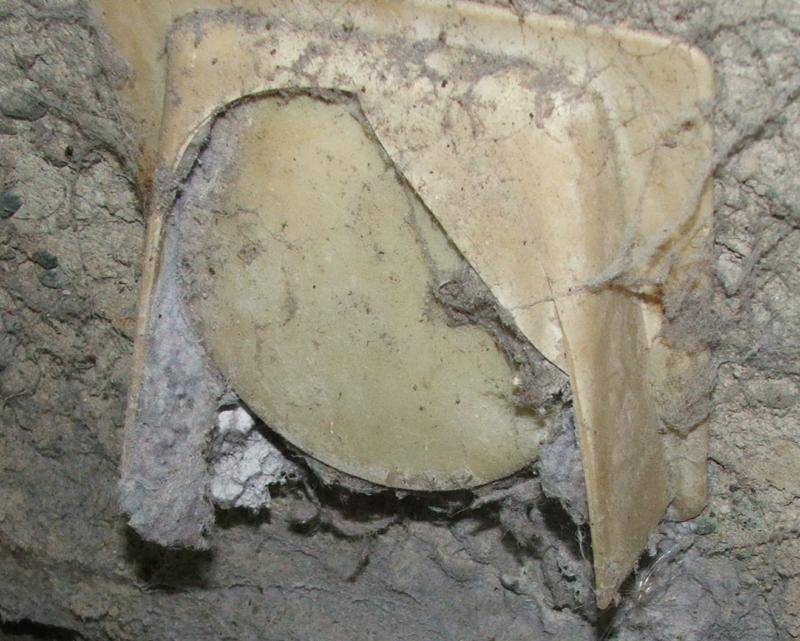
Today’s post is about the various exhaust vents in your home.
There are a multitude of exhaust vents in most homes. At this point I am not going to discuss combustion appliance vents/chimneys. This post is about bathroom, laundry, kitchen, dryer, and whole house exhaust vents—-mechanical type vents—-and specifically—-just the vent caps for this equipment.
Because of their importance in helping control humidity levels and indoor air quality it is critical in modern homes that these vents be maintained as functional as possible. While it is important for all aspects of these mechanical ventilation fans to be properly maintained, today I am only going to talk about the exterior cap.
All exhaust fans should be vented to the exterior of the home at a cap with a back-draft damper.
These caps can be on the side walls of your home or on the roof and sometimes even on the soffits (although soffit determination should be avoided if at all possible).
I recommend that you turn on all of your exhaust fans and walk around the exterior of your home and make sure that the flaps are opening properly. If they are on your roof you may need to use binoculars. Wasps and other critters like to build their nests in these caps and the winter time is a good time to make sure nests and other debris is not present. But be careful, stinging insects may be present. Wasp’s nests can fill the cap so that the vent flap will not open. Remember too—-roofs can be DANGEROUS places so make sure whoever maintains the caps knows what they are doing.
Caps can suffer mechanical damage to the point that they will not open properly and screens can become clogged with lint and debris. If the flap moves freely by hand but no air is coming out when the fan is running or the damper does not open when the fan is running—–have the venting fixed by a qualified person—-it may be venting warm moist air into areas that could cause damage to the home.

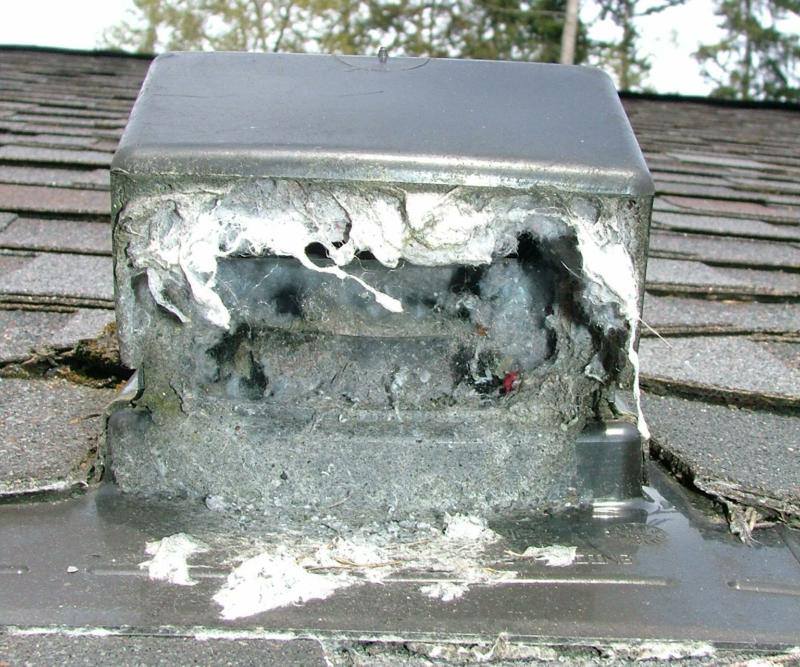
These exhaust fans should never terminate in crawl spaces or attics or at roof and soffit vent screens. Especially problematic are the types of terminations in the next two pictures.

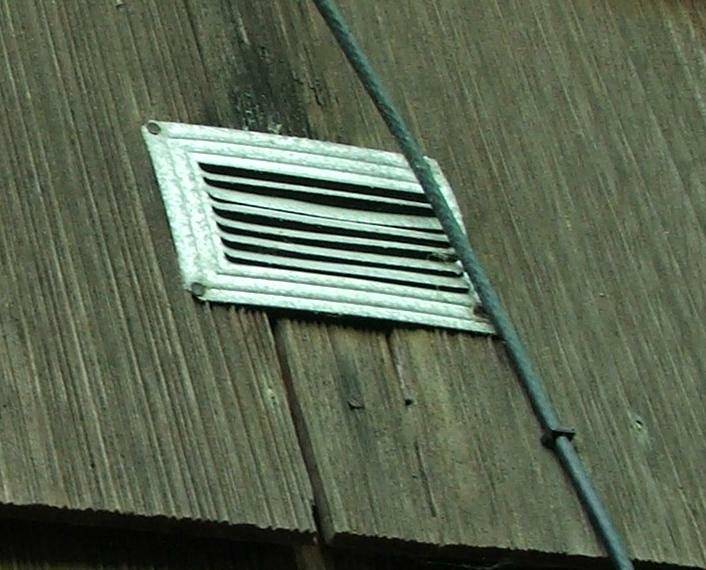
Obviously—unless you are creating a bird house—-the flap must be able to close by gravity if you are going to keep cold air and vermin out of the ductwork.
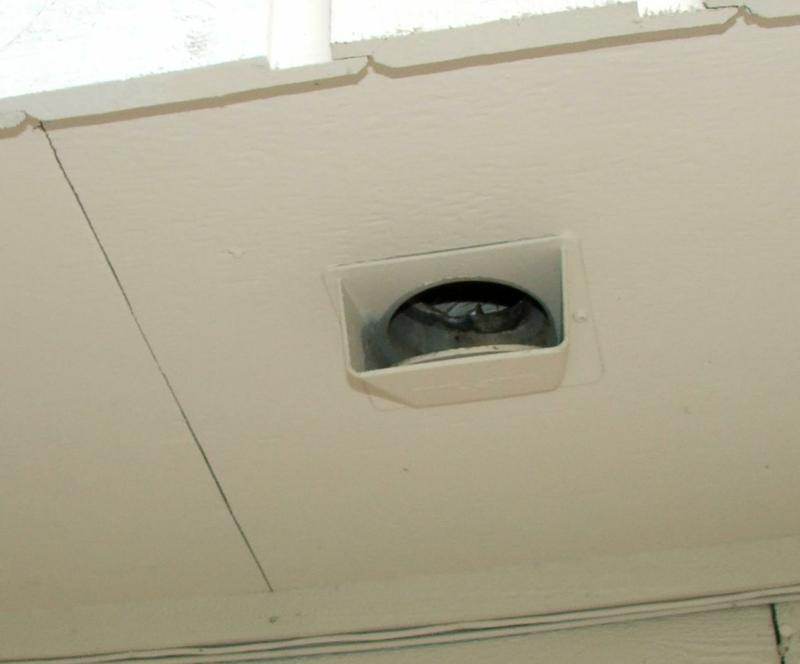
Many of these vent caps come with screens and/or protective grilles—and most of these screens are required by the building codes. While these screens may prevent small birds and mice from building nests in them, they are of questionable value in my opinion. But since they are required by the codes we must make sure they are maintained free of debris and vermin. Properly screened vents actually will promote wasps because they are protected from other vermin behind the screens and if the screens had smaller openings they would clog up even more quickly.
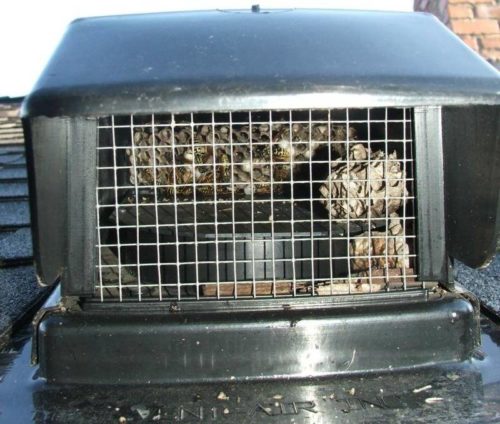
Because screens are required in the caps of range hood vents, we must be especially vigilant in maintaining the screens in these caps clean. Depending on cooking habits these screens are prone to plugging with grease and lint, creating a fire hazard.
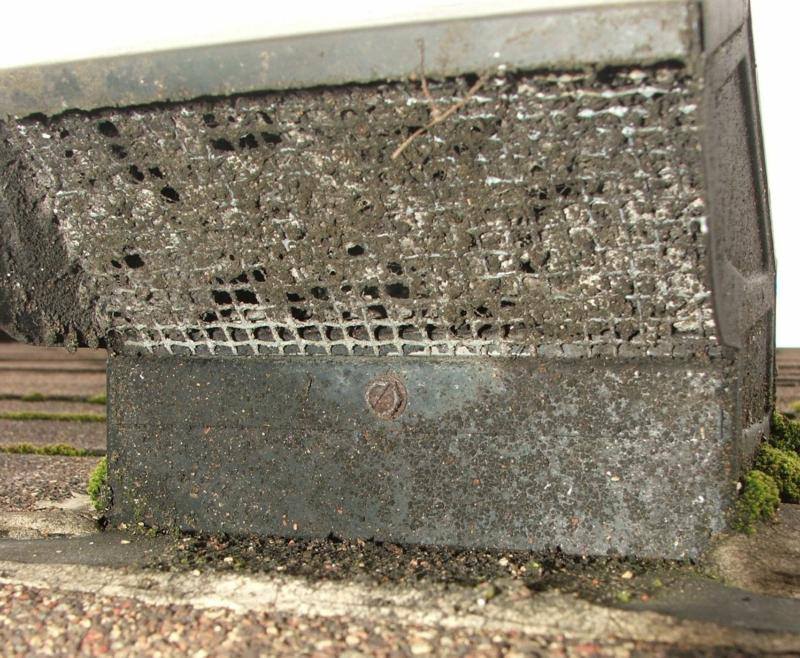
Screens also should NEVER be installed on dryer vents because when they become clogged, the lint represents a fire hazard, and it will take forever to dry your laundry—-wasting a lot of energy.

Louver type vent caps often don’t operate well, the flaps sometimes don’t fully open and sometimes they become warped by the sun—-when installed on the sunny side of the home. I prefer single flap type caps for most vents. Most louver type caps also do not meet the requirement for there to be a screen—when they are used at locations that require a screen.
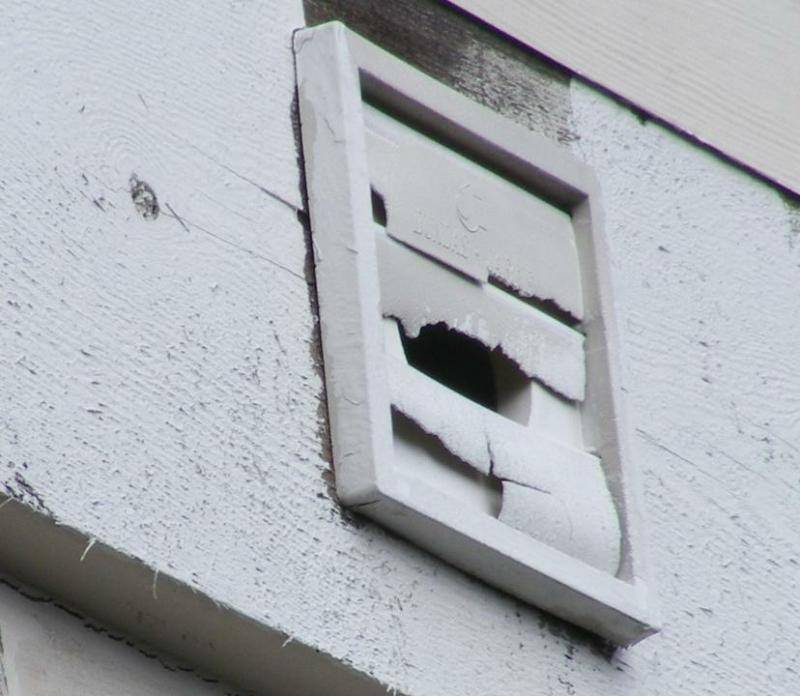
Here is a list of some of the many things that can be wrong, or go wrong, with just this single component of your exhaust vent systems.
- Missing
- Wrong type
- Mechanical damage
- Disconnected
- Blocked with lint/debris
- Blocked by nests (wasps and other vermin)
- Damper painted shut
- Too close to the ground
- Not attached
- Not sealed to prevent moisture and vermin entry to the home
- Vent flap stuck open
- Vent flap stuck closed
- Vent screens/grilles in caps that should not be screened
- Missing back draft damper
- Damaged back draft damper
- Damaged louvers
- Missing louvers
- Installed at wrong angle—damper won’t stay closed
I am done venting now.
By Charles Buell, Real Estate Inspections in Seattle
If you enjoyed this post, and would like to get notices of new posts to my blog, please subscribe via email in the little box to the right. I promise NO spamming of your email
I really appreciate your blog and the pictures are very helpful. I have excessive condensation in my small bathroom from the shower and a roofing company checked out the venting situation. They cleared the wasp nests from the vent flappers that was preventing the flappers from opening. They said I have a plastic flapper and that it should be replaced with a steel flapper that opens in a different manner (didn’t say how differently) so eliminate 85% of the wasps nests. What manufacturer/model of flapper do you recommend? Its interesting that I still have the excessive condensation all over the bathroom walls and ceiling even after they fixed the flapper.
Laura, you don’t say where you are but it is very difficult to keep bees from building their nests in these caps given that they are ideal for it. Just maintaining them free of bees every fall is usually all that is necessary. Plastic or metal single flap type caps are best in my opinion. That you are still having moisture may be that the fan is still not drawing air. Will the grille inside the bathroom hold up tissue when it is completely covered? If not, the flap in the unit may not be opening or some other restriction in the run of pipe. If that all checks out then you may not be running it long enough or it is of insufficient CFM for the size of the room. Ideally you want to boost the temperature in the bathroom prior to showering and then running the fan for an hour afterwards.
Thanks for this…I’ll know at least to avoid louvered. It does make me crazy in the cold northeast where I’m insulating and sealing like crazy that I’m also boring 4-6″ holes in the side of my house and sealing out the cold during the 99.999% of the time I’m not actively venting with nothing but a cheesy flap under a vent cap. Best practice to accomplish venting and conserve heat? Spring loaded flaps, magnets? Is there any rocket science that can help? Or just chalk it up to necessary evil?
Jay, as long as the flap is functional when it needs to be and the vent pipe is insulated, you really don’t have to worry about any small inefficiencies in terms of energy losses. The gains in terms of indoor air quality far outweigh the losses.
I totally agree w/ Jay.
When i climbed the ladder, i was horrified at what i saw. I am looking up at my brand new exterior exhaust damper that is attached to the ductwork for my soon to arrive 900 cfm range hood. Brand new and never used, there the exterior vent hangs with the damper stuck open about a quarter of the way! I was thinking the same thing as Jay – – i’ve been circling the remodel making sure the guys have been perfectly insulating all the nooks and crannies. And here is an intended 10″ duct with a gaping hole at its exterior!
Yes, Charles, the gains outweigh the losses. But if the mini flap does Not slap shut when the exhaust fan is Not running, then i disagree with your ‘outweigh’ reasoning.
Keep in mind that is only the exterior flap that is not closing (and of course it should be) but there is also one in the unit itself.
Our condo is on the water (ocean) and we get winds that blow the flaps of our vents so they make a lot of banging noises. I’m trying to solve that problem – any ideas? So far, I’ve come up with needing to get covers WITHOUT flaps (I have a few that have smaller screens & louvers that don’t flap) – and I’ve been told I can get a backdraft flap that can be stuck further into the ductwork to replace the flap at the vent … does this sound right?
Also, we are replacing 4 fan vents and one dryer vent – I guess what I described could be used for the fan vents, but not the dryer vent?
Ryan, “ticking” flaps can sometimes be difficult to cure. Certainly removing flaps at the exterior will not help as that would allow the flaps in the fan units themselves to be placed under negative pressure resulting in ticking of those flaps. Of course all exterior caps are required by adopted energy codes to be in place. A flap at the exterior and at the interior unit work together to reduce the ticking but under high wind conditions may not always keep them from ticking. Some caps have magnetic flaps that can help counteract this condition. Wind baffles at the exterior that shield the cap can also help. Sometimes the flaps have weather-stripping that dampens the sound.
Hi Charles, thanks for your quick answer. I’m not so concerned with ticking inside the ducting, it’s just a problem at the exterior vent with more direct wind exposure. If I am able to install a backstop inside the ducting, say 6-12 inches from the exterior, and changed the vent cover to one without a flap, I’m pretty sure that would solve the noise problem. At least, that’s what I want to try.
My question is if there’s anything wrong with trying that solution – is that against code, or does my solution cause red flags for any other potential reasons or problems?
It will promote clogging where it will be difficult to clean. The code requires a flap at the exterior.
I live in a high wind area. The wall cap I am purchasing comes with a gravity fed flap, but the wind can create a backdraft issue, as the wall cap flap alone is not enough. I was advised by that wall cap company to consider purchasing a separate backdraft damper and place it in the duct work near the terminal, by the wall cap. I was told that spring closed dampers can restrict airflow and also there may be issues with the springs after some time, where it would effect the performance of the damper. What are your thoughts on getting an in line backdraft damper–gravity fed? Or would you advise spring loaded for a high wind situation? The good also comes with gravity fed backdraft dampers, but I was told by several sources to remove them, as they are very difficult to access and clean. Curious to know your thoughts.
Also, if I do place a separate backdraft damper near the duct terminal, is duct insulation still critical?
While in extreme conditions, the outside flap can “tic” from negative pressure during heavy winds, this can typically be avoided by a proper flap at the range hood itself. If there is none there, one should be installed/reinstalled.
I was told to focus on getting a good quality backdraft damper near the end of the terminal. I was curious to know if you discouraged spring loaded dampers. A few sites say that the spring can cause air resistance and may effect air flow performance of the hood. Is a spring loaded damper more sturdy than a gravity fed damper in high wind situations though?
Also, people have complained that the flap was keeping them up at night from flapping so loud.